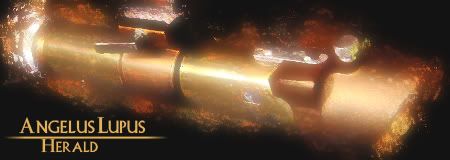Warning Etching Of This Kind Might Result In Toxic Gas!!
Only attempt in well ventilated area.
this is a cut and paste, so if anyone complains about it,I'll have to delete this post, but since we have no section on finishing I'll paste it in this one....but it seems a nice way to customize some sink tubes, it say's ferrous metals, but aluminum will take blue even tho it's not supposed to...so i imagine this could work ok on mhs, it will likely cause problems in threaded sections tho...
For etching, we’ll need a liquid conductor, suitable resist and a power supply that can be regulated.
Liquid Conductor:
Saltwater will do fine as it’s one of the more conductive water-based solutions. The conductivity of drinkable groundwater is usually in the range of 30K to 60K ohms. A 7% solution of saltwater has a conductivity of something under 1K ohms which is adequate for our purposes. Increasing the salt solution further doesn’t dramatically increase conductivity.
Compared to acids and other etch methods, saltwater is safe, inexpensive and readily available.
Suitable Resist:
We need something nonconductive and waterproof which can withstand the mechanical action of etching and is easily removable. Traditionally, etching resist was some form of asphaltum. Lacquer spray paint/finish works fine--fast drying and is removed with acetone. Deft and Dupli-Color are two sprays which are suitable. Any lacquer-based spray product should work.
Lacquer seems to work best on ferrous based metals. It doesn’t adhere as well on brass and galvanized metals.
Finger nail polish works well as a resist.
Power Supply:
Save yourself the expense of a commercial DC power-source and just use dry cell batteries. Anything from 1.5V to 9V will work fine. The humble D cell will do everything you want done.
Increasing the saltwater solution and/or voltage won’t make much difference--varying either or both won’t hurt anything, but doesn’t help much either. 1.5V and 7% saltwater will do the trick.
To see how this works and to grasp the fundamentals, round up a 1.5V cell (AA, C or D--doesn’t matter), some leads, a glass container of some sort, a couple strips of ferrous-based metal--iron, steel, nails or some such.
Mix up some saltwater (1 tablespoon of salt in a cup of water, this is the same mixture we used while quenching), spray one of the strips with a couple coats of lacquer-based spray and let dry--a heat-gun speeds things along. Clean the metal with acetone before spraying to get a good bond.
Scratch what you want etched into the sprayed surface. Place the two strips (one sprayed, the other bare) into the saltwater bath and connect the leads. The positive pole of the battery goes to the strip you want etched--the sprayed one. The negative pole connects to the bare strip.
Metal attached to the positive (+) pole will be etched.
Metal attached to the negative (-) pole will produce bubbles.
Cathode is the negative pole; Anode the positive pole.
You’ll see bubbles emanating from the bare strip (cathode -). If they’re coming off the sprayed strip (anode +) then reverse the leads. You'll get a nice mark in minutes. Wait an hour for a very deep etch. Remove the strips from the bath, remove the sprayed material with acetone and inspect the etch. That’s it, that’s the whole deal! The rest is just refinement.
In all etching, the degree of bubbling is the prime indicator with which to monitor the process. Saltwater etching as described above will produce a clean, crisp, deep etch without undercuts.
with this you can make custom designs on your hilts.... i plan on doing some lace work on a new one soon, this seems to be the best method





 Reply With Quote
Reply With Quote






 Vi veri veniversum vivus vici
Vi veri veniversum vivus vici






Bookmarks